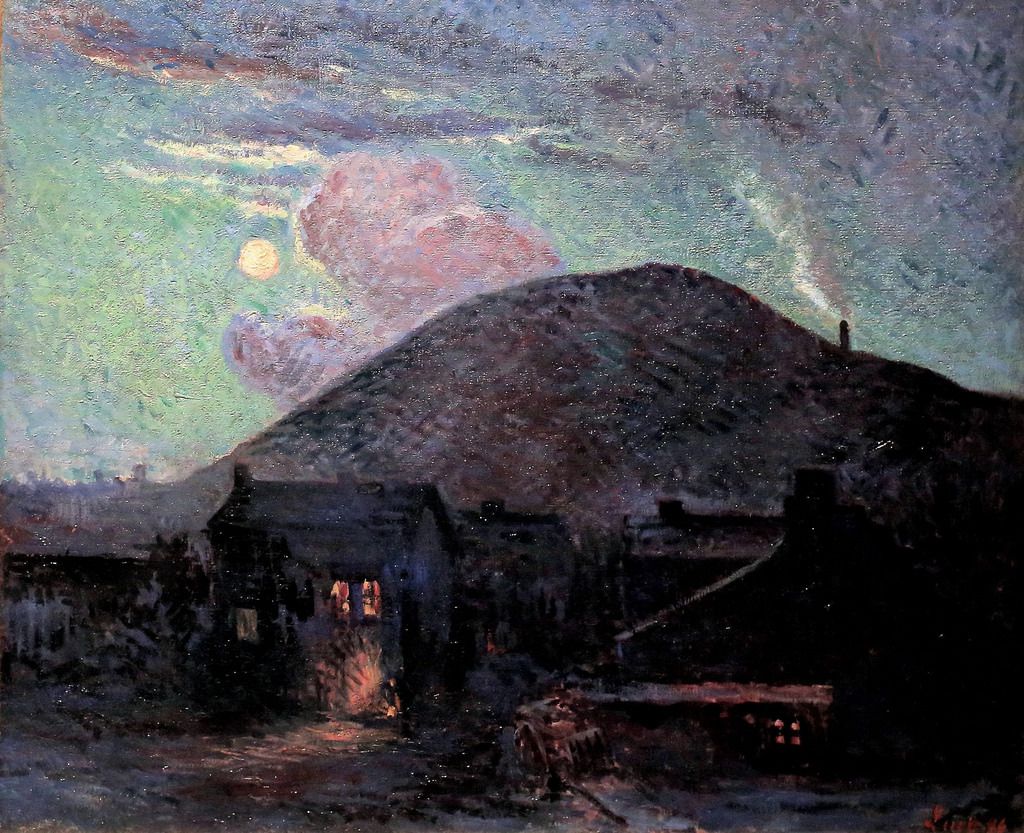The Emile Verhaeren exhibition in Musée des Avelines Saint Cloud
/image%2F1030222%2F20160115%2Fob_133015_une-lecture-tvr.jpg)
Verhaeren is a Flemish poet writing in French, a figure of the art scene and European literature at the turn of the nineteenth and twentieth centuries; he lived in Saint-Cloud from 1900 until his death in November 1916 run over by a train in Rouen station. The Musée des Avelines devotes an exhibition to "Emile Verhaeren catalyst of the art scene."
Very popular in France until the 50s, Verhaeren’s poetry in free verse is imbued with a deep breath and a vital energy, promoting the birth of a new civilization based on the search for social justice that challenges the reader even today, over a century after its writing.
Verhaeren was also an art critic and friend of many artists of his time, writers like Stefan Zweig, Rainer Maria Rilke and Romain Rolland but also painters, sculptors and engravers of the post-Impressionists, pointillist and symbolist schools who invented a total committed art that will blow a wind of protest and freedom; however he “misses” new names that will revolution art in the early twentieth century such as Picasso, Braque, Delaunay, Matisse.
Émile Verhaeren and his wife Marthe moved to Saint Cloud, which the poet enjoys "good air" and stimulating near Paris and provides the perfect balance between simplicity of rural life and the intoxication of the cities he describe in his book “ Les villes tentaculaires” The sprawling cities (1895).
They rented a small apartment to the Tribout family; the son Georges, a sculptor become a dear friend of the couple and painted several portraits of the poet. He received his artist friends in his modest office. The writer then aged 45 years at the heart of European literary and artistic world, nominated for the Nobel Literature prize.
The exhibition encompasses four themes:
The first room desplays the figure of Verhaeren in his study. Personal items but also portraits of the writer by his friends painters like Van Rysselberghe Theo James Ensor or Willy Schlobach well as drawings and photographs illustrate the warm intimacy of his office.
The next room shows the intense literary and critical work of Verhaeren, poet of "Flanders and the World", its engagement with Octave Maus the “group of the Twenty” in Brussels and his ardent defence of post-impressionist works of Paul Signac, Theo van Rysselberghe or Henri Cross ... It also evokes his fascination for cities and their modernity, the beauty he perceives of the new industrial world (at the same time Maximilien Luce paints Charbonnages Colliery (1896)) but also the denunciation of social injustices he expressed so aptly in “Campagnes hallucinées” Hallucinated countryside (1893).
The next room evokes Verhaeren’s position during 1st World War when profoundly shocked by the invasion of Belgium, a neutral country, by Germany, he leaves his European utopias to become its patriotic spokesman.
The last room is devoted to symbolism, a movement supported by Verhaeren, seeing in these Belgian and French artists (such as Odilon Redon, Fernand Khnopff, William Degouve de Nuncques, Henri Le Sdaner, Constant Montald) the expression of an interior pursuit of strangeness and ideal.
Emile Verhaeren's poetry in his time
In 1910, his friend Stefan Zweig publishes his biography because he sees in his work the embodiment of a new literary style, which puts man at the at the heart of the torments of History. Zweig is passionate about it: its intensity, the expression of the Flemish soul, the excitement with which it translates the forces of the modern world: industry, urbanization, the working masses. This is man’s daily struggle against the world’s oppression. Thus is Verhaeren’s poetry modern, sensitive and prescient, Such topics reflect social changes that will profoundly change the face of Europe on the eve of the First World War.
But the outbreak of the conflict and the brutal invasion of Belgium by the German army in August 1914, radically changes his pacifist opinions. Verhaeren suffers a terrible disappointment, then turns into hard nationalistic views and puts his pen to service the battle against the German invaders as evidenced in La Belgique sanglante Bloody Belgium (1915).
Following his visit to the front of the battle of Yser in the company of King Albert I, he ultimately breaks the friendships he had forged with the Germanic world. His acerbic writings provide him great popularity - Verhaeren embodies nationalist poet tirelessly denouncing German oppression - but they also attract him great criticism from former friends, including Stefan Zweig and Romain Rolland.
Despite the warnings of these on his oratorical and literary excesses, Verhaeren remains true to its patriotic love. In 1916, few signs of easing are felt but his sudden death in November of the same year deprives it of any subsequent critical analysis.
/http%3A%2F%2Fwww.musee-saintcloud.fr%2Ffiles%2Futilisateurs%2Fl.antoine%2Fimages%2Faffiche_-_exposition_emile_verhaeren.jpeg)
Les Expositions | Musée des Avelines
Emile Verhaeren (1855-1916), Poète et Passeur d'Art du 15 octobre 2015 AU 6 mars 2016
in French, unfortunately !
/image%2F1030101%2F20140507%2Fob_b266c9_printemps-07-7.JPG)
/image%2F1030222%2F20160728%2Fob_bf6c51_manhattan-bird-s-eye-view.jpg)
/image%2F1030222%2F20160620%2Fob_6f2633_buttes-chaumont.jpg)
/http%3A%2F%2Fsize.blogspirit.net%2Fhautetfort.com%2Flafautearousseau%2F250%2Falbum%2Fla-basilique-de-saint-denis-necropole-royale%2F1100359567.jpg)
/image%2F1030222%2F20160306%2Fob_751605_jab15-caillebotte-001f.jpg)
/image%2F1030222%2F20160220%2Fob_585f6c_hotel-de-soubise.jpg)
/image%2F1030222%2F20160131%2Fob_cd1744_louvre-bataille-ucello.jpg)
/image%2F1030222%2F20160115%2Fob_133015_une-lecture-tvr.jpg)
/image%2F1030222%2F20160102%2Fob_4d1c90_presse.jpg)
/image%2F1030222%2F20151211%2Fob_d77938_vue-aerienne.jpg)
/image%2F1030222%2F20151130%2Fob_987788_caillebotte.png)


Comment on this post